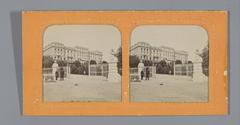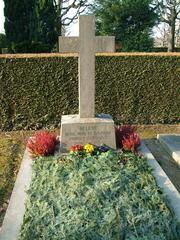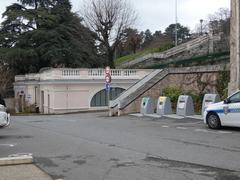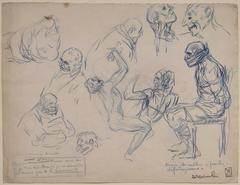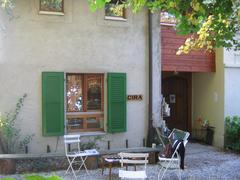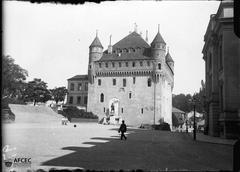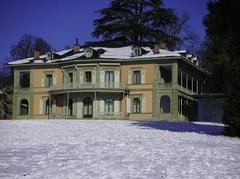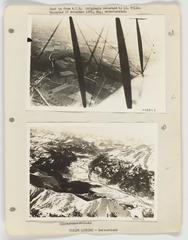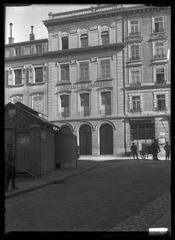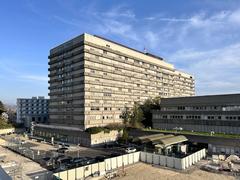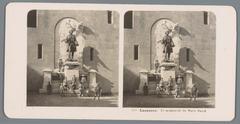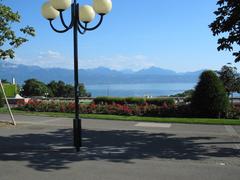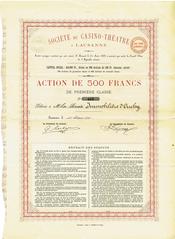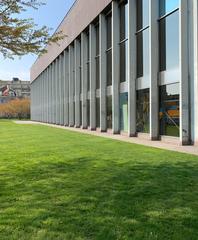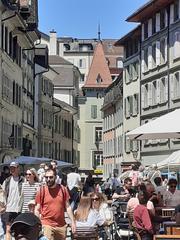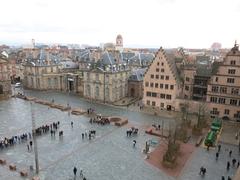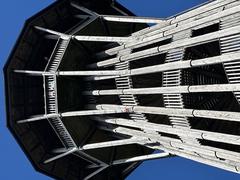Cantonal Museum of Zoology Lausanne: Visiting Hours, Tickets, and Travel Guide
Date: 15/06/2025
Introduction
Nestled in the heart of Lausanne within the historic Palais de Rumine, the Cantonal Museum of Zoology offers a fascinating journey through the diversity of the animal kingdom and the region’s scientific heritage. As one of Switzerland’s oldest zoological museums, it houses over two million specimens—ranging from insects and mollusks to vertebrates, fossils, and extinct species. The museum serves as a vibrant educational and research center, and its recent integration into the Naturéum has further enhanced its interdisciplinary approach.
This comprehensive guide provides up-to-date information on visiting hours, ticketing, accessibility, travel tips, and highlights of the museum’s unique collections. You’ll also find recommendations for nearby attractions, ensuring a rewarding and seamless visit to one of Lausanne’s cultural gems. For the latest details, consult the official Naturéum website and Palais de Rumine Museums site.
Table of Contents
- Introduction
- Museum History and Evolution
- Collections and Key Exhibits
- Visitor Information
- Accessibility and Amenities
- Getting There & Nearby Attractions
- Integration with Naturéum
- FAQ
- Conclusion
- References
Museum History and Evolution
Early Foundations
The Cantonal Museum of Zoology traces its origins to 1779, when Daniel-Alexandre Chavannes began cataloguing natural history specimens at the Académie de Lausanne. By 1826, his vertebrate collection was acquired by the State of Vaud, and the museum officially opened in 1833, making it one of Switzerland’s earliest institutions dedicated to zoological research (suisseactivites.ch).
Expansion and Relocation
Throughout the 19th and 20th centuries, the museum expanded its holdings, including the acquisition of Albert Vouga’s bird collection in 1886 and significant insect collections from Auguste Forel and Jacques Aubert. In 1909, the museum moved to its present home in the Palais de Rumine, a landmark building that preserves the charm of 19th-century museology with its ornate display halls and comparative anatomy rooms.
Integration into Naturéum
In January 2023, the museum became part of the Naturéum, the State Museum of Natural Sciences, uniting the disciplines of zoology, botany, and geology. This integration has fostered new interdisciplinary exhibitions and research initiatives, such as the ongoing “Spécimens 24” exhibit.
Collections and Key Exhibits
With over 2 million specimens, the Cantonal Museum of Zoology offers an unparalleled overview of the animal kingdom, both Swiss and global.
Insect and Mollusk Collections
The museum’s extensive insect holdings include butterflies, beetles, and a wide array of other arthropods, while the mollusk collection features both terrestrial and aquatic species. These collections are vital for research and conservation, and many specimens are on public display (whichmuseum.com).
Vertebrate Specimens
Featuring over 25,000 specimens, the vertebrate collection displays mammals, birds, reptiles, amphibians, and fish. Highlights include the iconic Siberian tiger, moose, polar bear, and the world’s only taxidermied great white shark, measuring nearly 6 meters.
Fossils and Prehistoric Animals
Paleontological exhibits trace the evolution of life in the region, with fossils and reconstructions of extinct animals such as mammoths and dinosaurs, providing insight into millions of years of natural history.
Exhibition of Extinct Species
A dedicated exhibit educates visitors on the causes and consequences of extinction, featuring real specimens and interactive displays that underscore the importance of conservation.
Local and Global Fauna
The museum spotlights Swiss biodiversity, particularly species native to the Lake Geneva region and canton of Vaud, while also offering comparisons with exotic animals from around the world.
Interactive and Educational Displays
Accessible, interactive exhibits—including tactile specimens and multimedia elements—engage visitors of all ages. Educational programs and workshops are available for families, schools, and groups.
Dioramas and Reconstructions
Immersive dioramas recreate natural habitats and prehistoric landscapes, offering a vivid, contextual experience of animal life and environmental change.
Temporary Exhibitions and Research
The museum regularly hosts temporary exhibitions focused on current scientific topics and unique aspects of its collections. Its scientific collections support ongoing research and are accessible to scholars and students.
Visitor Information
Visiting Hours
- Tuesday to Sunday: 10:00 AM – 5:00 PM
- Closed Mondays and public holidays
Always confirm opening times on the official Naturéum website before your visit.
Admission and Tickets
- Permanent exhibitions: Free entry
- Temporary exhibitions: Modest admission fee (free for visitors under 25)
- Family, group, and school rates: Available; inquire in advance
- Tickets: Can be purchased on-site or online to avoid queues
Guided Tours and Events
The museum offers thematic guided tours, workshops, and special events throughout the year. Check the Naturéum events calendar for current offerings. Guided tours in English are available upon request.
Accessibility and Amenities
- Wheelchair access: Elevators and ramps ensure access to main exhibition areas; adapted restrooms available
- Stroller access: Family-friendly facilities
- Assistance: Staff available to help visitors with reduced mobility or additional needs
- Languages: Exhibit labels primarily in French; some English and German translations. Multilingual staff can assist.
- Restrooms: Clean, accessible facilities
- Cloakroom/lockers: Available for personal items
- Wi-Fi: Free throughout the Palais de Rumine
- Food & Drink: Not permitted in exhibition spaces; nearby cafés and restaurants offer refreshments
- Gift shop: Books and educational materials available
Getting There & Nearby Attractions
Location
- Address: Palais de Rumine, Place de la Riponne 6, Lausanne, Switzerland
Public Transport
- Metro: Line M2 to “Riponne–Maurice Béjart”
- Bus: Lines 1, 2, 6, and 8 stop nearby
- On Foot: Central location; a short walk from major city attractions
By Car
- Parking: Paid parking at Parking Riponne and Parking Saint-François; spaces may be limited during peak hours
Nearby Attractions
- Lausanne Cathedral: A Gothic masterpiece with city views
- Saint-Maire Castle: Historic 15th-century landmark
- Esplanade de Montbenon: Scenic park with alpine vistas
- Olympic Museum: Celebrating the Olympic Games
- Cantonal Botanical Garden & Fine Arts Museum: Also within or near Palais de Rumine
Integration with Naturéum
The Cantonal Museum of Zoology’s integration into the Naturéum in 2023 has enhanced collaborative research, education, and conservation efforts across the disciplines of zoology, botany, and geology. This synergy enriches the visitor experience and advances scientific understanding of biodiversity and environmental change.
Frequently Asked Questions (FAQ)
Q: What are the museum’s opening hours?
A: Tuesday to Sunday, 10:00 AM–5:00 PM; closed Mondays.
Q: Is admission free?
A: Yes, permanent exhibits are free. Temporary exhibits may require a small fee, with free access for visitors under 25.
Q: Is the museum wheelchair accessible?
A: Yes, main areas are accessible. Some architectural limitations exist in older sections; staff can assist.
Q: Are guided tours available in English?
A: Yes, by prior arrangement.
Q: Can I take photos?
A: Photography without flash is generally permitted; check for restrictions in special exhibitions.
Q: Are tickets available online?
A: Yes, online ticketing is available via the official website.
Q: Are pets allowed?
A: Only service animals are permitted.
Q: What other attractions are nearby?
A: The museum is close to Lausanne Cathedral, the Olympic Museum, and other cultural landmarks.
Q: Is the museum suitable for children?
A: Absolutely. There are interactive exhibits and family-friendly programs.
Conclusion
The Cantonal Museum of Zoology in Lausanne stands as a testament to Switzerland’s commitment to scientific discovery, education, and conservation. Its remarkable collections, immersive exhibitions, and dynamic educational offerings make it a must-visit destination for residents and travelers alike. Situated in the beautiful Palais de Rumine and now part of the innovative Naturéum, the museum is easily accessible and an ideal starting point for exploring Lausanne’s cultural heritage.
Plan your visit by consulting the official Naturéum website for the latest updates on exhibitions, events, and visitor information. For audio guides and interactive content, download the Audiala app, and follow the museum on social media for news and inspiration.
References and Further Reading
- Cantonal Museum of Zoology Lausanne Visiting Hours and Tickets: Your Complete Guide to History, Exhibits & More (https://natureum.ch/fr/)
- Cantonal Museum of Zoology Lausanne: Visiting Hours, Tickets & Historical Insights (https://natureum.ch/en/)
- Collections and Key Exhibits at the Cantonal Museum of Zoology: Visitor Guide, Hours, Tickets & Highlights in Lausanne (https://www.vd.ch/themes/culture/musees/musees-de-lausanne/musee-cantonal-de-zoologie/)
- Cantonal Museum of Zoology, Lausanne: Visiting Hours, Tickets & Nearby Historical Sites (https://www.palaisderumine.ch/)
- Museum details and visitor reviews (https://whichmuseum.co.uk/museum/cantonal-museum-of-zoology-lausanne-24201)
- Lausanne Tourism: Cantonal Museum of Zoology (https://www.lausanne-tourisme.ch/de/entdecken/kantonales-zoologisches-museum/)
